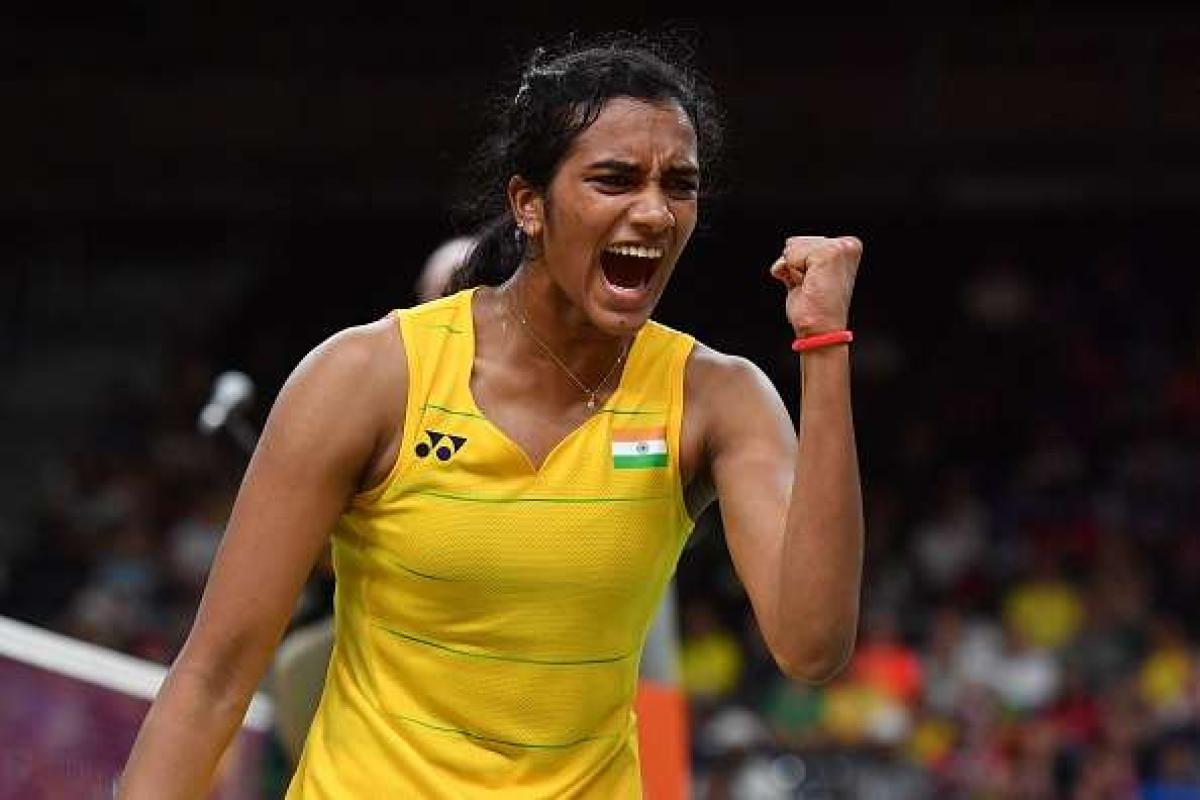Live
- GMR Airports Unveils AI-Powered Digital Twin Platform to Transform Airport Operations
- India poised to become leading maritime player: PM Modi
- Top Causes of Kidney Stones and How to Recognize Silent Symptoms
- India’s renewable energy capacity logs 14.2 pc growth at 213.7 GW
- Winter Session of Odisha Assembly adjourned sine die
- Biden calls Trump's tariff approach 'major mistake'
- After Drama Over Eknath Shinde’s Chief Minister Race, Maharashtra Cabinet Formation Faces New Tensions
- Egyptian FM, Blinken discuss recent developments in Syria
- Iran's supreme leader says Syria's developments result of US-Israeli 'plot'
- Elon Musk to Purchase $100 Million Luxury Mansion Next to Donald Trump's Mar-a-Lago, Report Reveals
Just In

Indian badminton this year saw P.V. Sindhu coming out of the shadow of her illustrious Hyderabadi city rival Saina Nehwal, who was blighted by multiple injuries that marred the second half of her season.
New Delhi: Indian badminton this year saw P.V. Sindhu coming out of the shadow of her illustrious Hyderabadi city rival Saina Nehwal, who was blighted by multiple injuries that marred the second half of her season.
Sindhu did what no other Indian woman had done before: bag a silver medal at the Olympic Games -- bettering Saina Nehwal's 2012 London Games show of a bronze medal -- which was a first in Indian badminton.
Sindhu's standing was further consolidated when she captured her maiden Superseries title -- in China in November -- and by the end of what has been a memorable year she possessed her best world rank, at No.6.
Saina, who clinched the bronze medal at the Asian Championships and a team bronze at the Uber Cup, followed by the title at the Australian Superseries, was India's premier hope for a medal at Rio. But a right knee injury meant she wasn't at her best leading up to the Games, where the 26-year-old lost to lower-ranked players and failed to make it to the knock-out stage.
After Saina's exit, the Indian medal hopes fell on double World Championships silver medallist Sindhu, known not only for her giant-killing instincts but also for her inconsistency.
But her hard work and preparations under the watchful eye of Pullela Gopichand paid off at Rio. Her improved defence helped her dispatch talented and experienced opponents like Tai Tzu Ying of Chinese Taipei, London Olympics silver medallist Yihan Wang of China and Nozomi Okuhara of Japan before reaching the final.
As she entered the summit clash, India, which opened its medal account through the fiesty woman wrestler Sakshi Malik's bronze medal, clamoured for the yellow metal after a gap of eight years.
Her final opponent was two-time world champion Carolina Marin of Spain, the lone challenger to Asia's band of talented women's singles players -- and Sindhu clearly was not the favourite.
But the 21-year-old Indian gave a tough fight to the Spaniard before bowing out in the third game as a ruthless and determined Carolina became the first non-Asian to finish on top in the category at the Olympics.
However, Sindhu won hearts despite the loss as you don't often see an Indian playing the gold medal round at the Olympics and showing composure, talent and respect towards her opponent.
Sindhu's medal was India's second and last at the Games and she returned to a thunderous welcome and grand monetary cheques from various quarters -- as also the Rajiv Gandhi Khel Ratna award. She became a household name and has reportedly signed an annual contract of Rs 50 crore with a private firm, making her the country's richest non-cricketer.
She extended her dream year with the China Open SuperSeries title and then finished second at the Hong Kong Superseries before settling with a No.6 world ranking to close the year.
Even as Sindhu soared, Saina faced a host of fitness issues. She won a bronze at the Asian Championships and powered India to another bronze at the Uber Cup. She was then troubled by a foot injury before recovering and registering an important triumph at the Australian Open.
Afterwards, during training prior to Rio, she injured her right knee. After the Olympics washout, she underwent surgery to repair her troubling knee and made her comeback in November. Come next year, she will hope to hit top fitness and form starting with the Premier Badminton League (PBL), as she seeks to remain India's premier shuttler.
As the limelight was on the duo, Indian men tried their best to exceed expectations, but the likes of Kidambi Srikanth and Parupalli Kashyap were not able to sustain form. While Srikanth managed to reach the quarter-finals, Kashyap was sidelined due to a knee injury and spent most of his season in the process of putting his fitness back on track. Young Sourabh Verma made some amends by winning the Chinese Taipei Masters Grand Prix title and reached the final at the Bitburger Open.
Among other categories, the successful women's doubles pair of Jwala Gutta and Ashwini Ponnappa decided to part ways after difficult results at various levels, including the Rio Olympics. The 2011 World Championships bronze-winning pair was unable to advance to the knock-out phase. Come PBL 2017, both will be hoping to show fans their form and, especially for 33-year-old Jwala, it will be a question of extending her long career.
By Abhishek Purohit

© 2024 Hyderabad Media House Limited/The Hans India. All rights reserved. Powered by hocalwire.com







